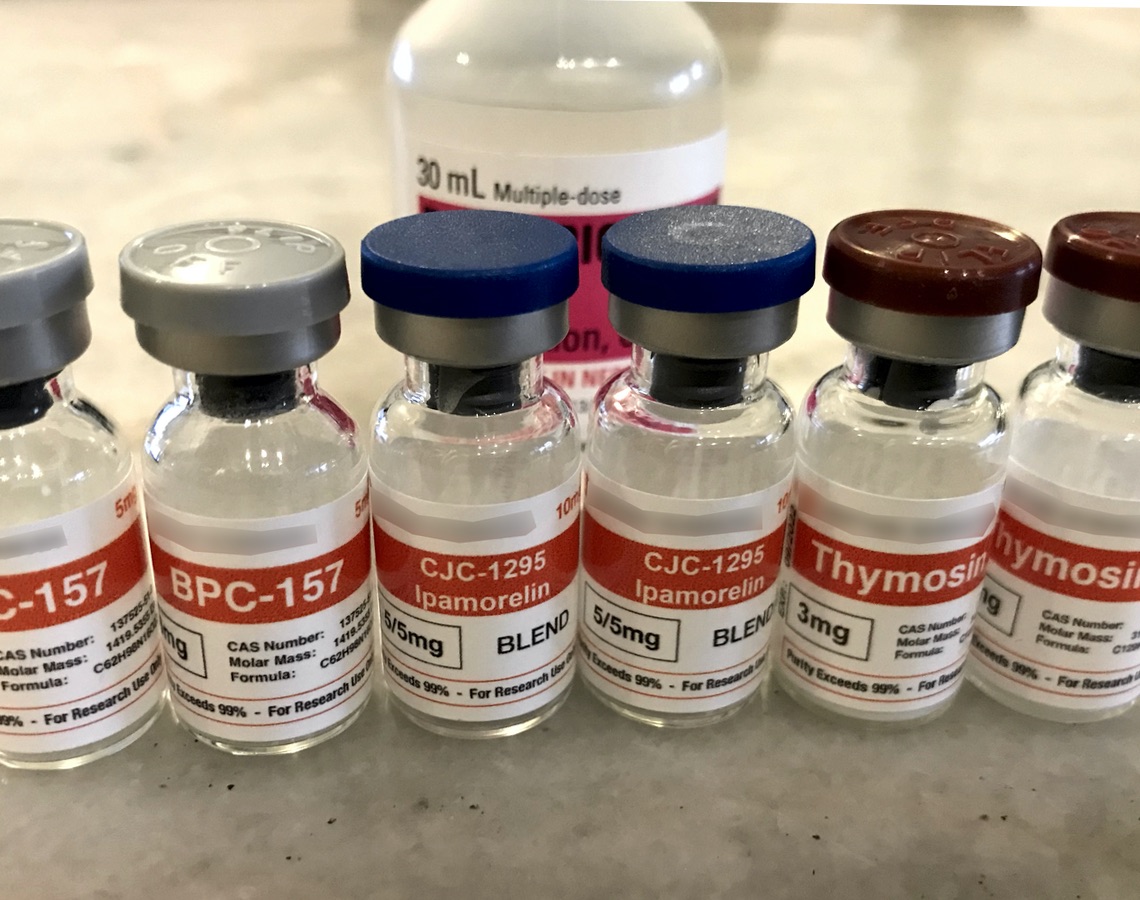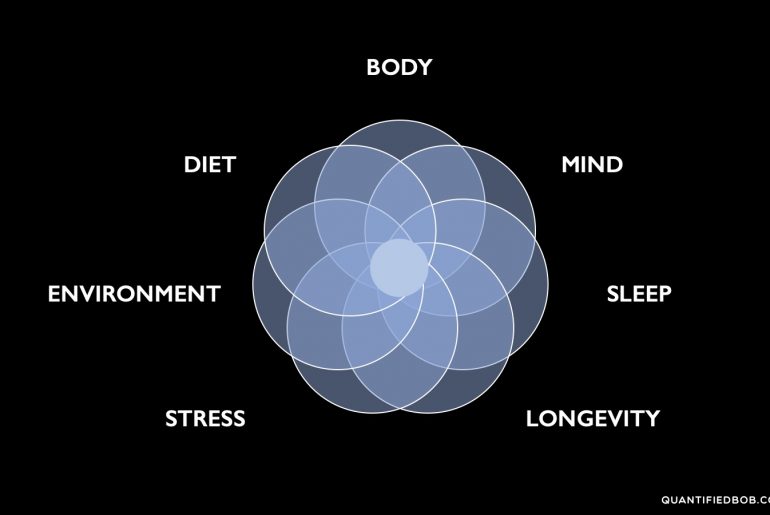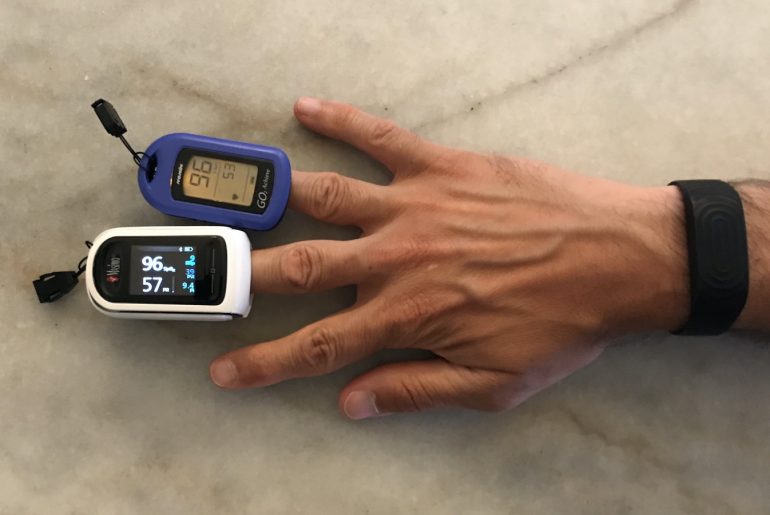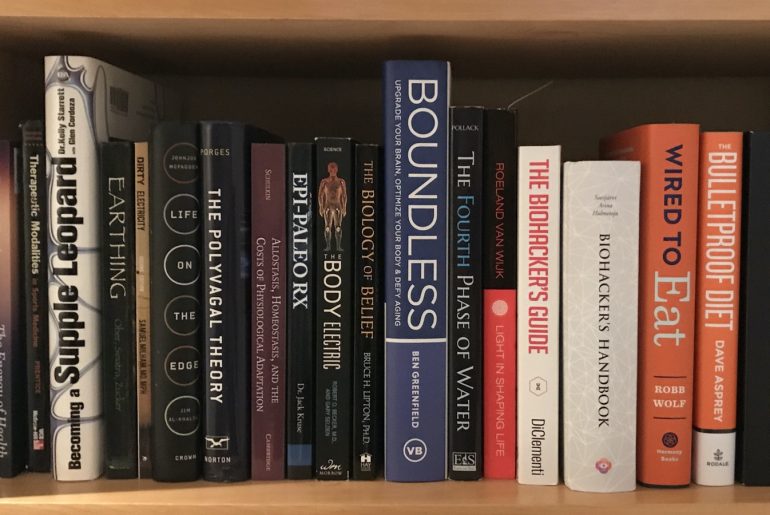Units? Micrograms? Milliliters? Tick Marks? Frustrated? Calculating accurate peptide doses can be difficult and frustrating. It doesn’t have to be. PepCalc makes peptide calculator math simple.
Public interest in peptide therapy has recently taken off in the wellness space, but the math involved in determining accurate syringe measurements can be confusing to even experienced users and practitioners. It doesn’t have to be.
Quick Note: Peptides are still a “gray” area (they can be sold for research purposes, but legally consumers may need a prescription to use them). My recommendation is to find a practitioner or clinic that offers peptide therapy or find a reputable vendor (I’ve included some links at the end of this post).
Table of Contents
Peptide Dose Calculator Math
Peptide Dose Calculation Variables
Desired Peptide Dose
Syringe Details (Type, Units, Tick Marks, Volume)
Vial Details
Existing Peptide Dose Calculators — Difficult to Use, Sometimes Inaccurate
Introducing PepCalc — a Simple Peptide Reconstitution and Dose Calculator
How to Buy Peptides
Find a Qualified Peptide Therapy Practitioner
Purchase Peptides Online from a Reputable Source
Jeremy (my cofounder at Awesome Labs and fellow biohacker) and I decided to build an app to make it easy for anyone to do calculations (more about our peptide calculator app, PepCalc, in a bit). But first, an overview of peptide dose calculation math…
Peptide Dose Calculation Math
Without getting into the actual math, the problem can be stated as such:
Given a vial containing “X” amount of peptide powder that is then reconstituted in “Y” amount of sterile water, how many units or ticks on a syringe with volume “Z” must I draw the liquid up to in order to reach a desired dose of “D”?
It’s not rocket science, but it’s far from straightforward!
Peptide Dose Calculation Variables
Let’s take a closer look at the variables that need to be taken into consideration to accurately calculate doses:
1. Desired Peptide Dose
This is the starting point — how much peptide powder (not including the liquid) needs to be in the syringe? Peptide doses are usually measured in micrograms (mcg), but sometimes they may be shown in milligrams (in which case just divide by 1,000 to get micrograms).

2. Syringe Details (Type, Units, Tick Marks, Volume)
This is where things start to get complicated because syringes come in a number of different configurations:
a. Syringe Type
There are two main types of syringes — tuberculin (non-insulin) and insulin.
Tuberculin (non-insulin) syringes are metric and simply have mL/cc markings reflecting volume.
Insulin syringes are labeled either U-40 or U-100, indicating the type of insulin they are meant to be used with. This is where a lot of confusion arises in the peptide space. U-40 syringes are meant to be used with pre-mixed U-40 insulin vials containing a ratio of 40 units of insulin per 1 mL/cc of water. U-100 syringes are meant to be used with pre-mixed U-100 insulin vials containing a ratio of 100 units of insulin per 1 mL/cc of water. When used with pre-mixed insulin, all unit markings are equal across insulin syringes.
Fun fact: Differing insulin syringes were created to make it easier to dose smaller amounts of insulin. U-40 syringes are considered “canine” syringes and are used for dosing all types of animals.
The peptide dosing confusion stems from the fact that peptide users generally work with insulin syringes but do not have premixed vials of peptide solution.
b. Syringe Volume
There are seven sizes of insulin syringes, ranging in volume from 0.3 mL to 2.0 mL, and tuberculin syringes are typically 0.5 mL or 1.0 mL (but even 2 mL and larger sizes exist).
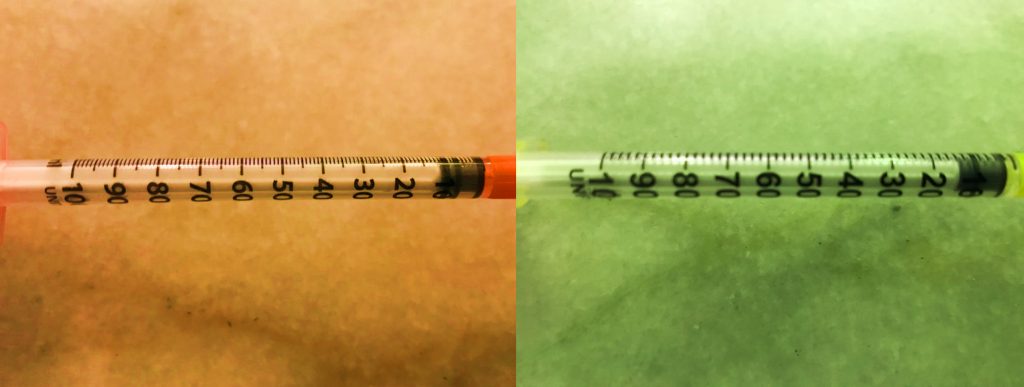
c. Tick Marks
Tick marks are the lines on the side of the syringe that show increments of units or mL/cc. Like a ruler, there are usually larger lines that indicate major values (10, 20, etc.), and between these lines are one or more smaller equally spaced lines to indicate smaller units (useful when trying to measure precise amounts).
d. Units (Insulin Syringes Only)
While all tuberculin syringes will display tick marks in mL/cc, remember that because insulin syringes are made to inject insulin, the tick marks on insulin syringes represent numbers of units. This is another area that trips most people up — the unit markings will need to be converted to corresponding volume in mL based on whether the syringe is calibrated for U-40 or U-100 insulin. In some cases, insulin syringes will display both units and mL/cc, but tuberculin syringes will not have any units markings.
3. Vial Details
Peptides typically come in a small sealed vial in powder form and must be reconstituted with bacteriostatic (sterile) water before they can be used.
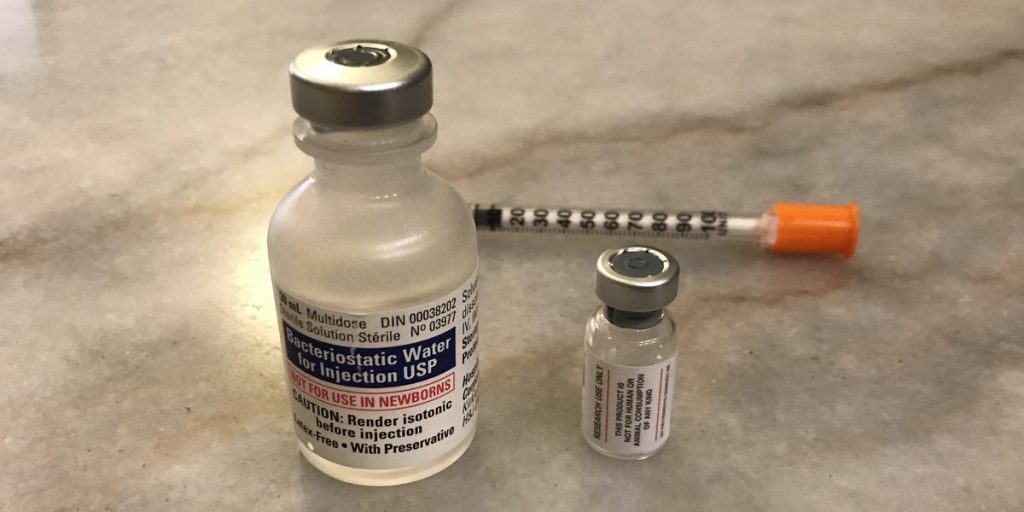
a. Peptide Amount
While the amount of dry peptide in the sealed vial is fixed (measured in milligrams vs. micrograms per dose), the amount of water added will change the dilution and affect how much liquid needs to be drawn from the vial for the same peptide dose (for example, adding 2 mL of water will require twice as much liquid to be drawn, versus adding 1 mL of water, to achieve the same dose).
b. Water Amount
The amount of sterile water added to the vial — typically, more than one syringe full.
Existing Peptide Dose Calculators — Difficult to Use, Sometimes Inaccurate
Jeremy and I started out by making our own spreadsheets to manage calculations. We tried searching for an existing tool that could suit our needs (why re-invent the wheel, right?), and while we did find several web-based calculators, they all had drawbacks — from non-intuitive user interfaces to inflexible or missing options, and in some edge cases would even produce inaccurate results (when we double-checked their math).
Introducing PepCalc — a Simple Peptide Reconstitution and Dose Calculator
If all of this sounds overwhelming, fortunately, there is now an easier way! As I alluded to earlier, we decided to build an app to take all of the headache out of peptide math. It’s called PepCalc, and it’s available on both iOS and Android. We’d love for you to check it out! 👇👇
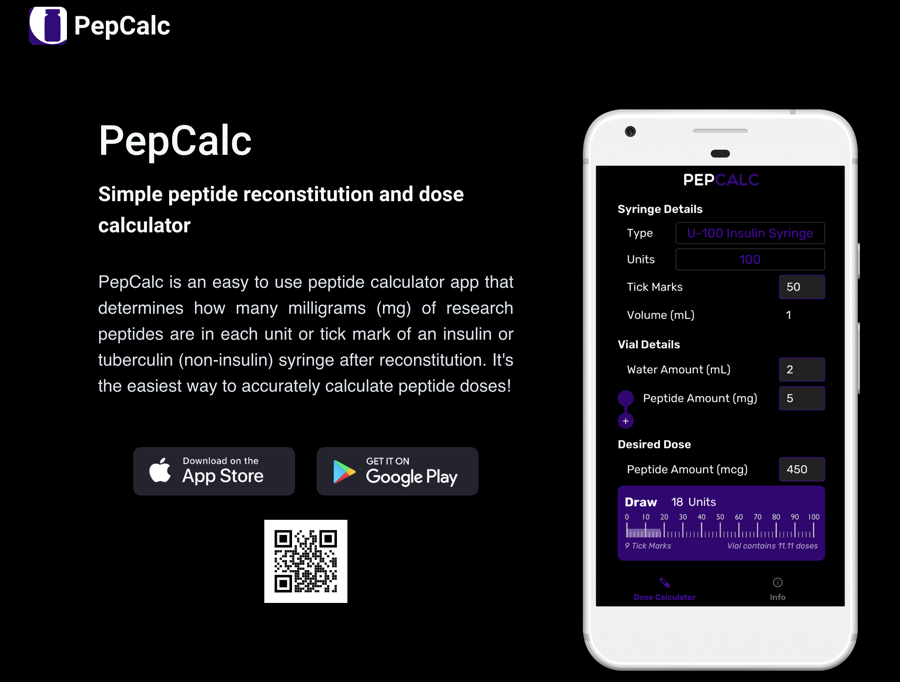
How to Buy Peptides
Find a Qualified Peptide Therapy Practitioner
There are now many practitioners around the world that are utilizing peptide therapeutics as part of their practice, and can prescribe and order peptides from reputable compounding pharmacies. Use the Find a Practitioner tool on The International Peptide Society website to locate a qualified practitioner.
Purchase Peptides Online from a Reputable Source
Price should not be the only factor when choosing a peptide vendor. Cheaper prices may indicate lower quality products or unreliable customer service.
Visit Limitless Life Nootropics for high-quality, therapeutic research peptides.
Use code quantifiedbob at checkout to save 15% off your order!
We’re building some cool stuff over at Awesome Labs, a health, wellness, and emerging technology studio — sign up for our mailing list to be the first to hear about new things we’re building! 💪

